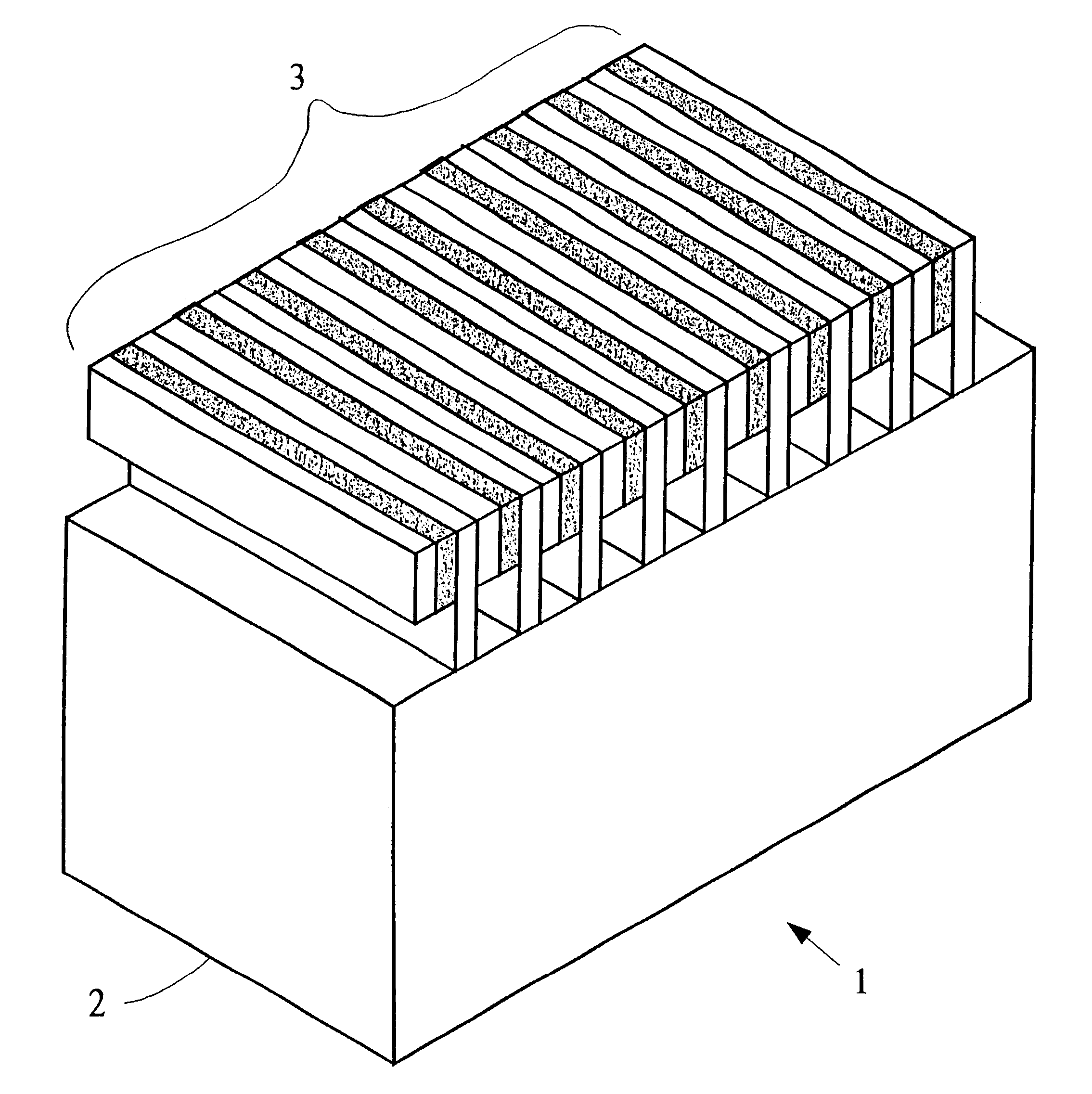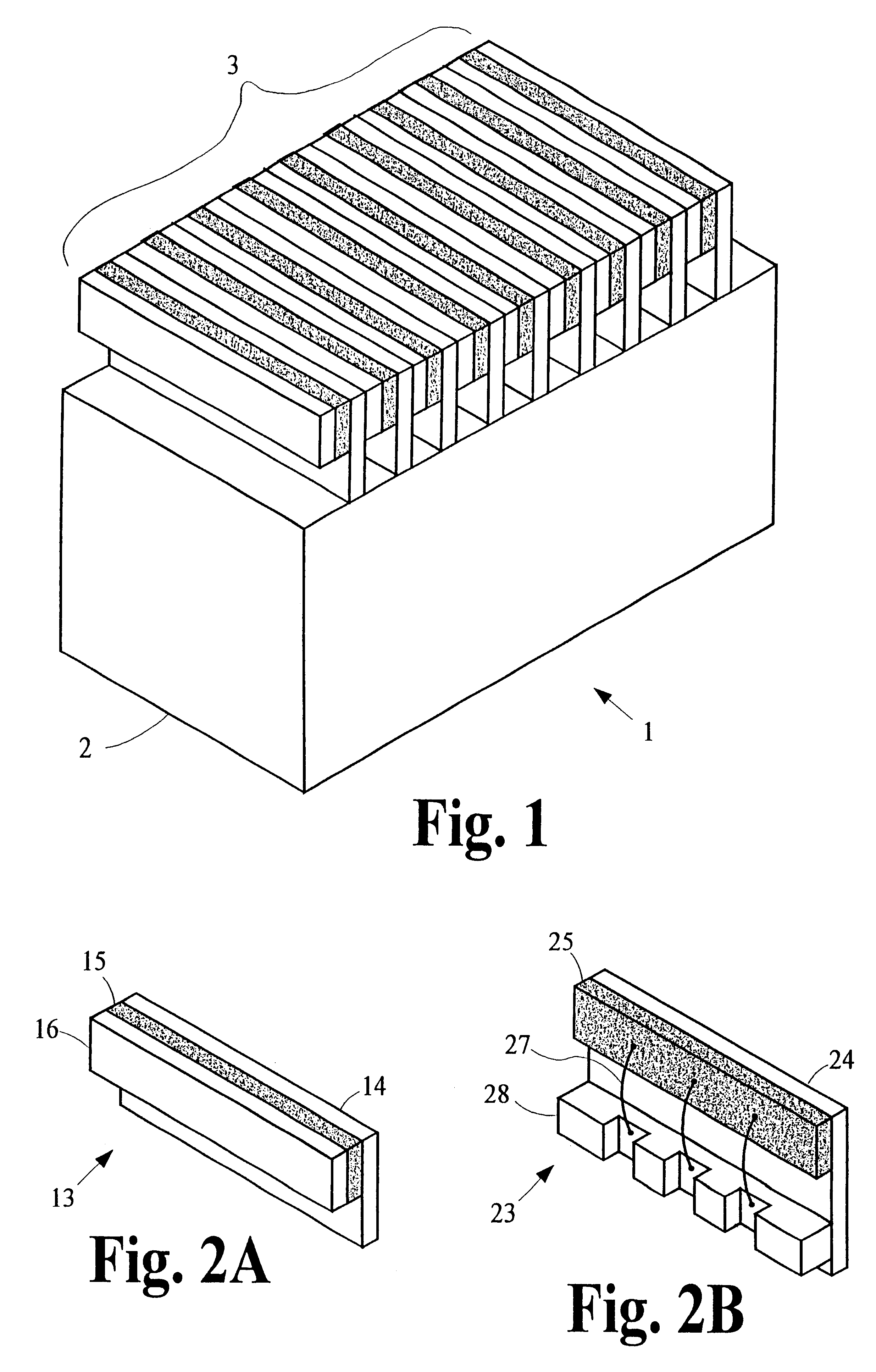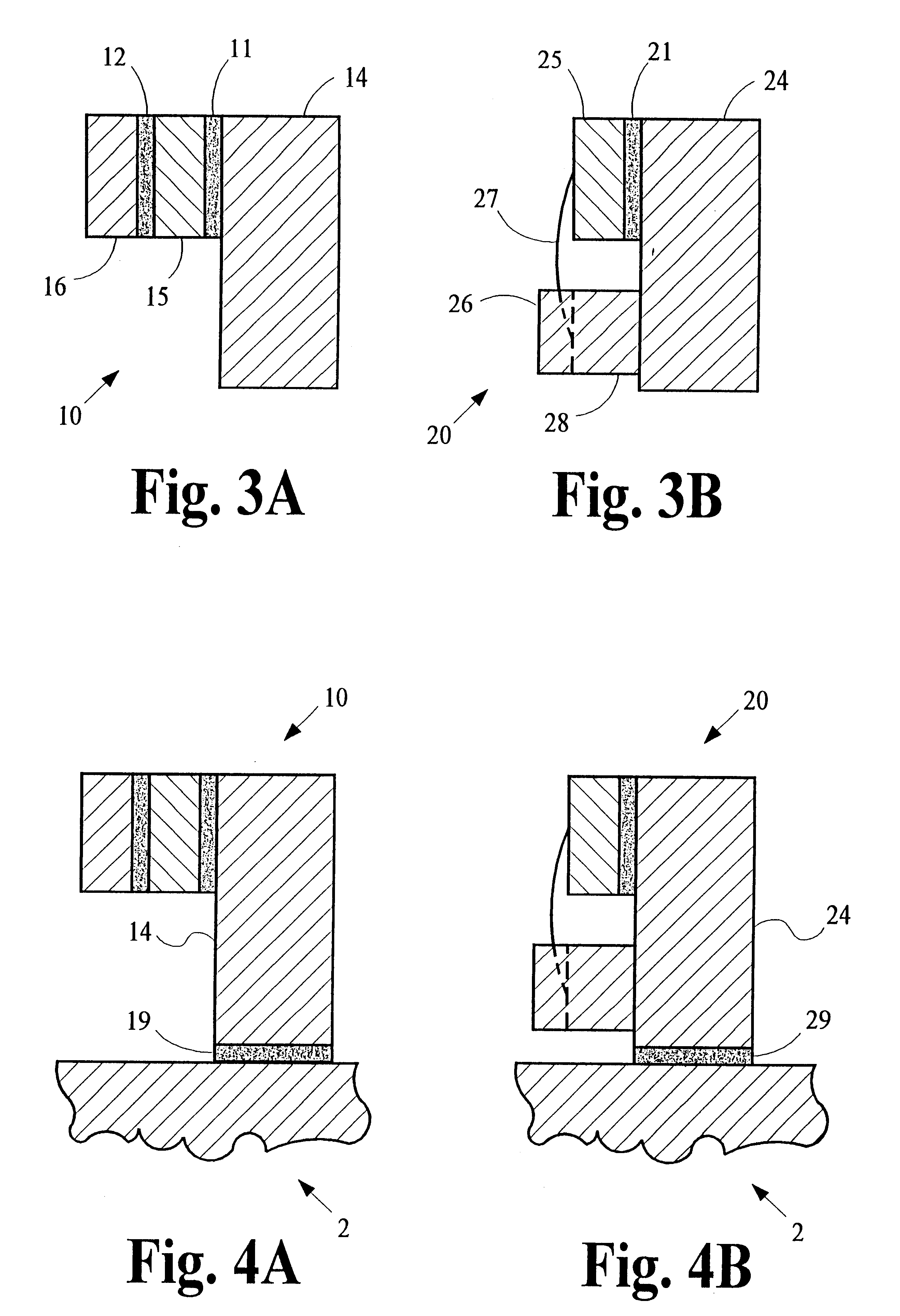Solder and material designs to improve resistance to cycling fatigue in laser diode stacks
a laser diode and stack technology, applied in semiconductor laser arrangements, semiconductor laser structure details, semiconductor lasers, etc., can solve the problems of laser module affixing agent failure, laser module affixing component failure to each other, and unacceptably large number of laser module operating intermittently stop operating, etc., to achieve the effect of improving resistance to cycling fatigu
- Summary
- Abstract
- Description
- Claims
- Application Information
AI Technical Summary
Benefits of technology
Problems solved by technology
Method used
Image
Examples
first and second embodiments
of a Laser Subassembly
FIGS. 2A and 2B are schematic perspective illustrations of two embodiments of a laser subassembly. The relative dimensions of the component parts of the embodiments in these and other figures are not necessarily shown to scale.
first embodiment
The first embodiment shown in FIG. 2A comprises a laser diode 15 in the shape of a bar made of a semiconductor material such as gallium arsenide (GaAs) affixed to support member 14 made of a material such as copper (Cu), copper-tungsten (CuW) or copper-molybdenum (CuMo) that is both electrically and thermally conductive. A bar 16 of electrically conductive material such as Cu or Mo is affixed to the opposite side of laser diode 15. Preferably, bar 16 is also thermally conductive. This first embodiment of laser subassembly 10 is convenient for manufacturing because it allows laser diode 15 to be tested prior to assembly into a diode stack. Support member 14 and bar 16 provide electrical contacts to the cathode and anode of laser diode 15 and they protect the brittle laser diode 15 against breakage during testing and assembly processes.
FIG. 3A is a schematic cross-section illustration of the first embodiment of laser subassembly 10. Laser diode 15 is affixed to support member 14 by af...
second embodiment
The second embodiment shown in FIG. 2B comprises a laser diode 25 in the shape of a bar made of a semiconductor material such as GaAs affixed to support member 24 made of a material such as Cu, CuW or CuMo that is both electrically and thermally conductive. A plurality of wires 27 are bonded to the surface of laser diode 25 and are bonded to depressions in a metalized surface of bar 28, which is made of an electrically insulating material such as beryllium oxide (BeO) or Aluminum Nitride (AlN) affixed to support member 24. This second embodiment of laser subassembly 20 allows laser diode 25 to be tested prior to assembly into a diode stack. Support member 24 and the metalized surface of bar 28 provide electrical contacts to laser diode 25. Support member 24 also protects the brittle laser diode 25 against breakage during testing and assembly processes.
FIG. 3B is a schematic cross-section illustration of the second embodiment of laser subassembly 20. Laser diode 25 is affixed to supp...
PUM
 Login to View More
Login to View More Abstract
Description
Claims
Application Information
 Login to View More
Login to View More - R&D
- Intellectual Property
- Life Sciences
- Materials
- Tech Scout
- Unparalleled Data Quality
- Higher Quality Content
- 60% Fewer Hallucinations
Browse by: Latest US Patents, China's latest patents, Technical Efficacy Thesaurus, Application Domain, Technology Topic, Popular Technical Reports.
© 2025 PatSnap. All rights reserved.Legal|Privacy policy|Modern Slavery Act Transparency Statement|Sitemap|About US| Contact US: help@patsnap.com



